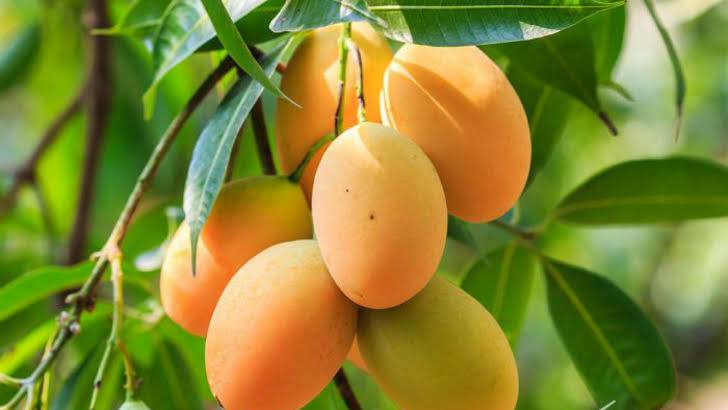Md. Arif Hossain
Bangladesh, along with the adjoining regions of India’s Assam and parts of Myanmar bordering Bangladesh, is considered the ‘centre of origin’ for mangoes. These regions still have wild mango varieties, from which, over thousands of years, we have derived diverse, sweet, fragrant, and commercially viable cultivars.
‘Centre of Origin’ refers to the geographical area where a particular crop first evolved or was domesticated and where the genetic diversity of that crop is found. The history of mangoes in Bangladesh predates the written history of the Bengali people. Commercial cultivation began in the northwest during the British colonial era. Some even claim that the “Kansat Mango Market” was once the largest mango market in Asia, although I haven’t found any proof to support that.
There are reportedly around a thousand varieties of mango in Bangladesh, although only a few are cultivated commercially, these are the ones we typically see in the fruit markets. Our researchers at BARI have developed 18 new mango varieties.
Thanks to efforts by public and private institutions, and various entrepreneurs engaged in modern agriculture, Bangladesh has made significant progress in commercial mango production. This year, the production target was around 2.7 million metric tons.
Once upon a time, selling mangoes or milk was frowned upon in rural communities. If there was a surplus, people simply gave it away for free. But over time, both mango and milk have become commercial commodities and subjects of local research.
To maintain export-quality standards, mango production is now guided by international protocols and Good Agricultural Practices (GAP). The government’s intent is sincere, but safe and hygienic fruit production at the field level remains a big challenge.
And there remains a significant gap between mango production and export in the country.
This year, nearly 40,000 tons of export-quality mangoes were produced in districts like Rajshahi. The government set a target to export 5,000 tons to about 38 countries, including China. Media gave the announcement full-throttle coverage, which raised hopes among farmers.
But reality told a different story. Only 780 tons were exported (though this number may rise slightly, it’s unlikely to jump to the targeted 5000 tons since the season is basically over).
About 25% of the total mango production in Bangladesh is wasted due to poor handling and storage, with a market value of around BDT 3600–4000 crore. And yet, Bangladesh boasts GI-certified varieties like Khirshapat, Langra, Ashwina, Fazli, and Haribhanga, all suitable for export.
This year, the Bangladeshi Embassy in Qatar organized a mango festival to boost exports. China also showed interest. But after all these efforts, the farmers saw little benefit. Even after selling 56 kg of mangoes per wholesale unit (maund), producers failed to earn a reasonable price.
Meanwhile, mango prices in Dhaka remained similar to last year. Personally, I bought mangoes for as low as 90 BDT/kg and as high as 150 BDT/kg for premium-grade fruits. Popular varieties in the local market included Langra, Himsagar, Fazli, Amrapali, BARI-4, and Haribhanga. I even saw “Banana Mango” being sold—a tangy-sweet variety that looks great but isn’t quite like my favourite hybrid, Amrapali.
On the issue of mango exports, Professor Abu Noman Faruq from Sher-e-Bangla Agricultural University has made some excellent points. I completely agree with him.
There are hard truths we must accept about Bangladesh’s mango export potential.
Unlike Mexico or Kenya, Bangladesh doesn’t grow mangoes year-round. I’ve tasted mangoes from both countries—their seasons are longer, production is more consistent, and the varieties have a long shelf life. Our mangoes will also never replace the prestige of Japan’s Miyazaki or India’s Alphonso varieties.
Bangladesh lacks cold storage, packaging facilities, and has costly transportation. Plus, since mango is a summer fruit, the pest pressure is high. As a result, foreign buyers enforce strict phytosanitary regulations to prevent pests and diseases from entering their countries.
So, the real question is: How rational is it to invest in massive infrastructure—cold storage, packaging units—for just 2–3 months of mango activity? These facilities will remain unused for the rest of the year.
That said, there are untapped opportunities too. If a portion of our massive mango output is processed, it can benefit both in terms of preservation and export value. Unfortunately, Bangladesh’s fruit processing industry is still underdeveloped.
Just as Bangladeshi tea enjoys global recognition, our mangoes could too—if we invest in quality processing and targeted export strategies.
In 2025, the global ripe mango market was valued at around $71 billion. So yes, mango can become a high-value export crop for Bangladesh. But instead of overhyping the potential, we need to approach mango exports with grounded realism—through improvements in production, processing, and marketing.
Md. Arif Hossain, CEO & Executive Director, Farming Future Bangladesh, Visiting Fellow Cornell University and Regional Head of WePlanet. Email: arif@farmingfuturebd.com


